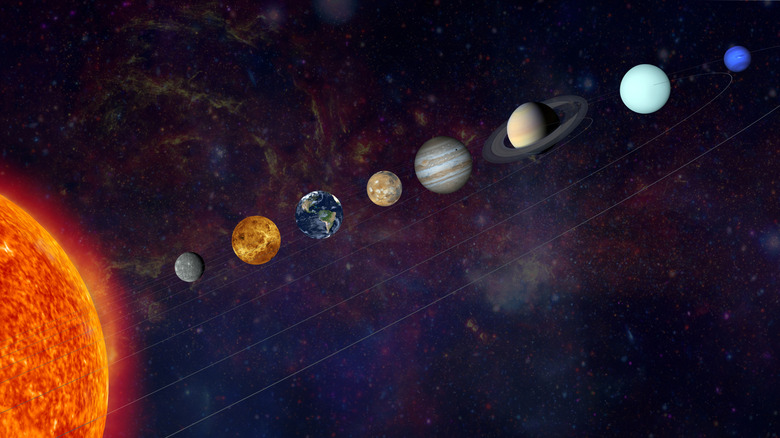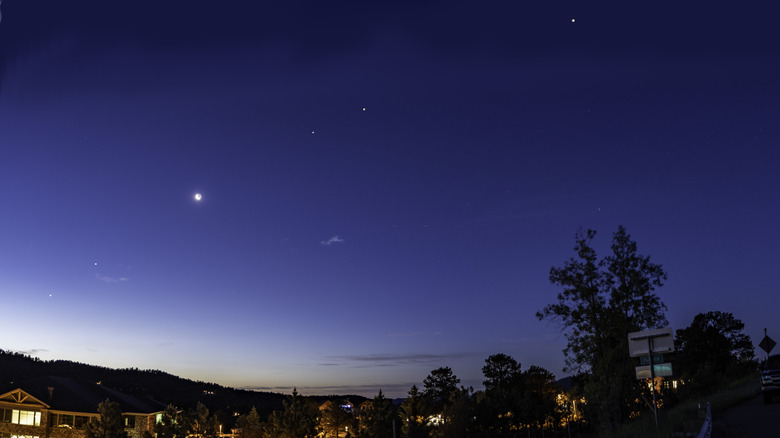January 2025 Planetary Alignments And When You Can See Them
One of the most beautiful events that you can see in the night sky is a planetary alignment, the term for when the planets line up in the sky and form an imaginary line. Although it may not be perfectly straight, seeing three planets stretch across the sky in a line — referred to as a mini planetary alignment – is relatively common. A small planetary alignment, which includes four planets, doesn't happen as often but will for all of January 2025 without needing a telescope.
A planetary alignment occurs because the planets orbit the sun on a flat plane called the ecliptic, making them always appear in a row somewhere in our sky. But what does change regularly is how many of the seven planets you can see in the line, and the more planets there are, the more rare and extraordinary the event is. So, it's pretty special that we'll be able to see Mars, Jupiter, Saturn, and Venus in a line from January through February 2025.
Within a couple of hours after the sun sets in the Northern Hemisphere, you'll be able to see Venus and Saturn in the west-southwest coming to a conjunction — the closest they appear in the sky — on January 17 and 18, before they begin to part ways. Next in line (looking west to east) will be Jupiter overhead. Then, Mars will appear bright all month in the east while in opposition — directly opposite of the sun from Earth, which happens every two years. At the same time, the fourth planet will be at its closest to Earth, making it look even bigger and brighter than average.
How to see the rarer six-planet alignment
While four planets aligning is a special occurrence with our sun and planets, being able to see six planets in a row is even more exceptional. Unofficially referred to as a planet parade, you'll be able to witness a large planetary alignment that includes Neptune and Uranus from January 2025 and into February. However, you'll have to find the furthest planets with a telescope, and viewing the alignment with dark skies will depend on the moon phase and where you are in the world; in the Northern Hemisphere, one ideal window will be from January 21 to 25.
Since Uranus and Neptune are the seventh and eighth planets from the sun, respectively, they don't appear as bright as the other planets in our solar system, so it looks like they're hiding in the line. From west to east, Neptune will appear as the third planet in the row, slightly northeast from Venus and just a few moon lengths away on January 29 and 30. Uranus will come next in the line, appearing straight overhead in the vicinity of Jupiter and the Pleiades or Seven Sisters, which is a dipper-shaped star cluster.

